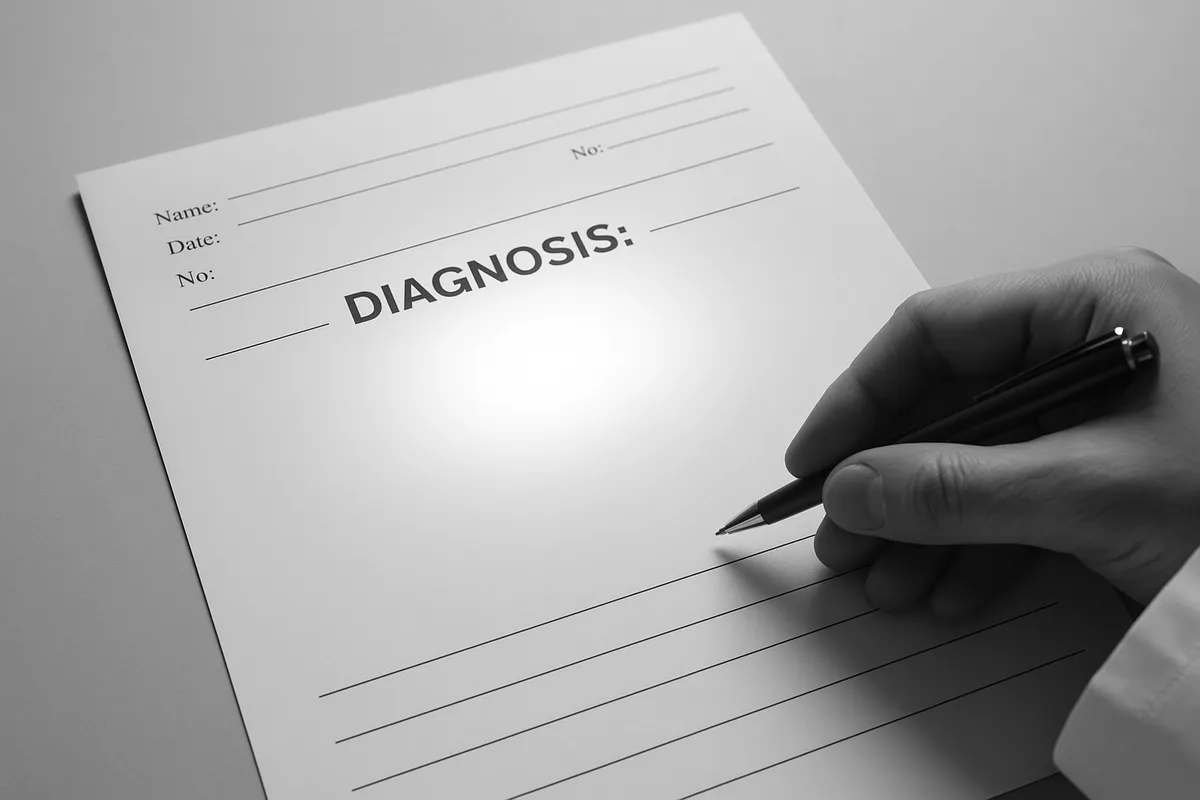When Not Naming Heals: Rethinking Autism Diagnosis
 Sometimes the most ethical diagnosis is the one left unwritten
Sometimes the most ethical diagnosis is the one left unwritten
A new Viewpoint paper by two pediatricians lays the groundwork for a long‑overdue shift inside clinical autism practice. Lester Liao and Mohammad Zubairi’s 2025 article, A Collaborative Approach to Assessment and (Non)Diagnosis of Autism, published in JAMA Pediatrics, is not another call for earlier identification or more refined screening instruments. It is a deliberate pause, a proposal for diagnostic humility. This paper invites a broader public reflection, an opportunity to explore how ideas like this circulate publicly—how healthcare defines, and sometimes loosens, its grip on the old “autism as a disorder” trope.
From its opening paragraphs, the article resists the easy assumption that autism is a fixed biomedical disorder lurking inside our minds, waiting to be detected. Liao and Zubairi acknowledge that diagnostic boundaries blur when cultural expectations of social behavior differ, and they use that blur as an entry point for critique. The “blurriness” is not a deficit in medicine’s instruments, they suggest, but evidence that the instruments themselves are products of a narrow cultural imagination. The most striking argument appears midway through the piece: medicine is habituated to certainty about organs like the kidney and has extended that same certainty to human behavior, as though social difference could be pathologized with the same confidence as carcinoma. This line alone inverts decades of clinical orthodoxy. It states outright that the biomedical model is overreaching when it presumes to define ideal human function.
Their framing of collaboration is not the shallow form of family involvement often invoked in policy language. It is a structural reorientation. Assessment begins with the family’s values, cultural location, and relationship to institutions. Only after that context is understood does a clinician consider whether the constellation of traits currently labeled autism fits the family’s world. A diagnosis, in this account, is not a verdict but one of many possible tools. It can clarify, but it can also wound. The choice not to diagnose—what the authors call the “nondiagnosis”—is presented as a legitimate and sometimes preferable outcome, especially when the label would amplify stigma or reinforce unwanted institutional power over a family.
What makes this piece so significant is its refusal to equate professional certainty with ethical responsibility. In a field dominated by insistence on universal screening and earlier interventions in policy and practice, Liao and Zubairi instead foreground uncertainty as a form of respect. They name the pluralism of beliefs about development and social behavior, from Rousseau’s ideal of natural freedom to Locke’s view of guidance, and show how these underlying philosophies still animate diagnostic debate. In doing so, they shift the conversation from symptom description to the moral foundations of clinical reasoning. Autism, in their hands, becomes a mirror for medicine’s own cultural biases.
The essay’s tone remains clinical but self‑aware. It neither romanticizes neurodiversity nor rejects biomedical insight outright. It simply asks the clinician to focus on context before attempting to label. This restraint is radical in its simplicity. The authors’ attention to marginalized families—those already wary of institutions that have historically harmed them—adds another layer of ethical weight. Their insistence that physicians avoid imposing a diagnosis “in the name of destigmatization” is an unusually precise indictment of how even well‑intentioned inclusion can become coercive when divorced from consent.
By reframing diagnosis as collaboration, Liao and Zubairi open a door to a gentler, more dialogic form of clinical practice. They show that therapeutic encounters need not depend on labeling, and that respect for difference can coexist with care. For clinicians steeped in diagnostic practice, that proposition may feel destabilizing. For autistic people and their families, it offers the beginning of repair — a hope that clinical humility can result in better care for people with autism.